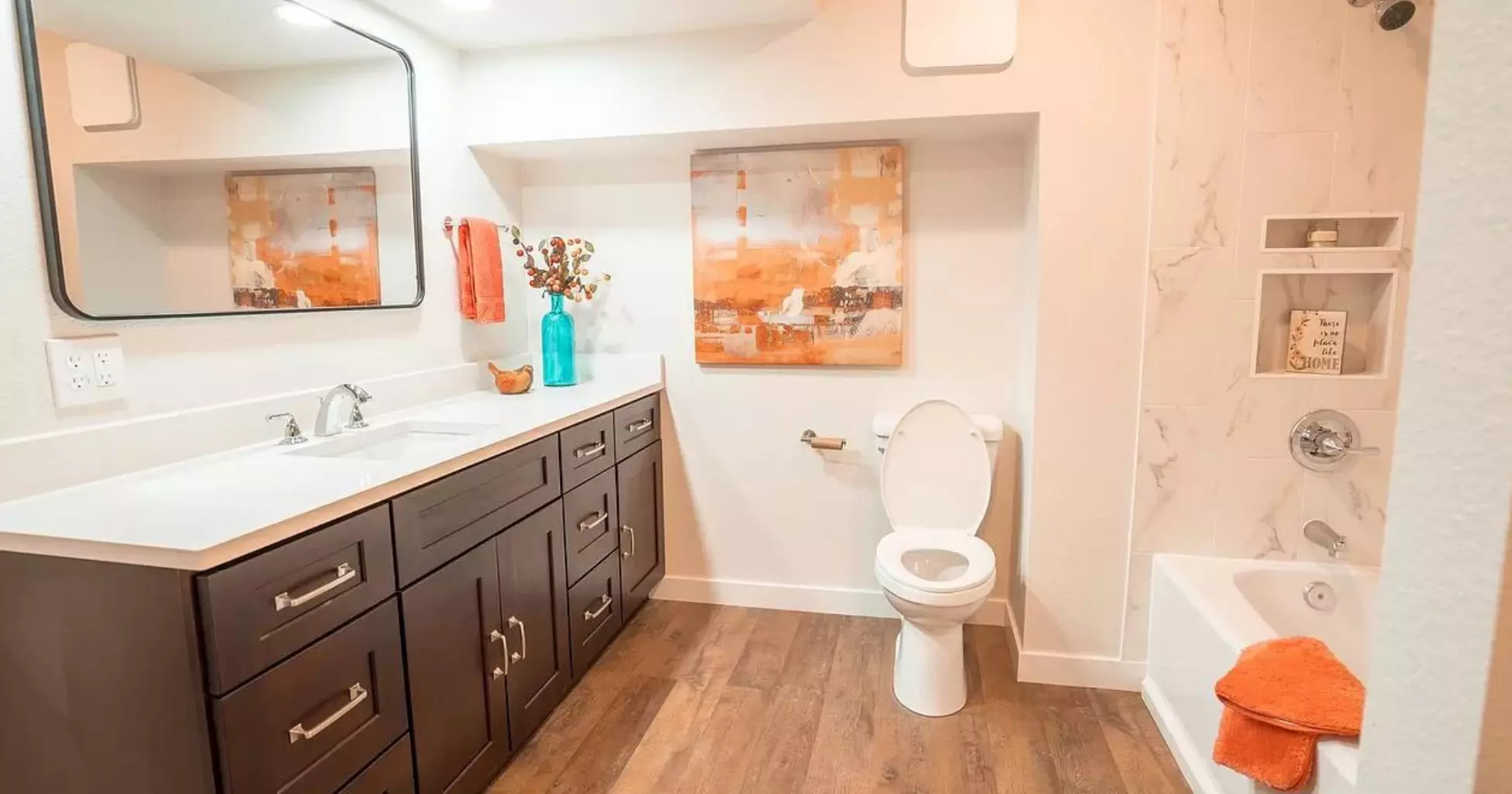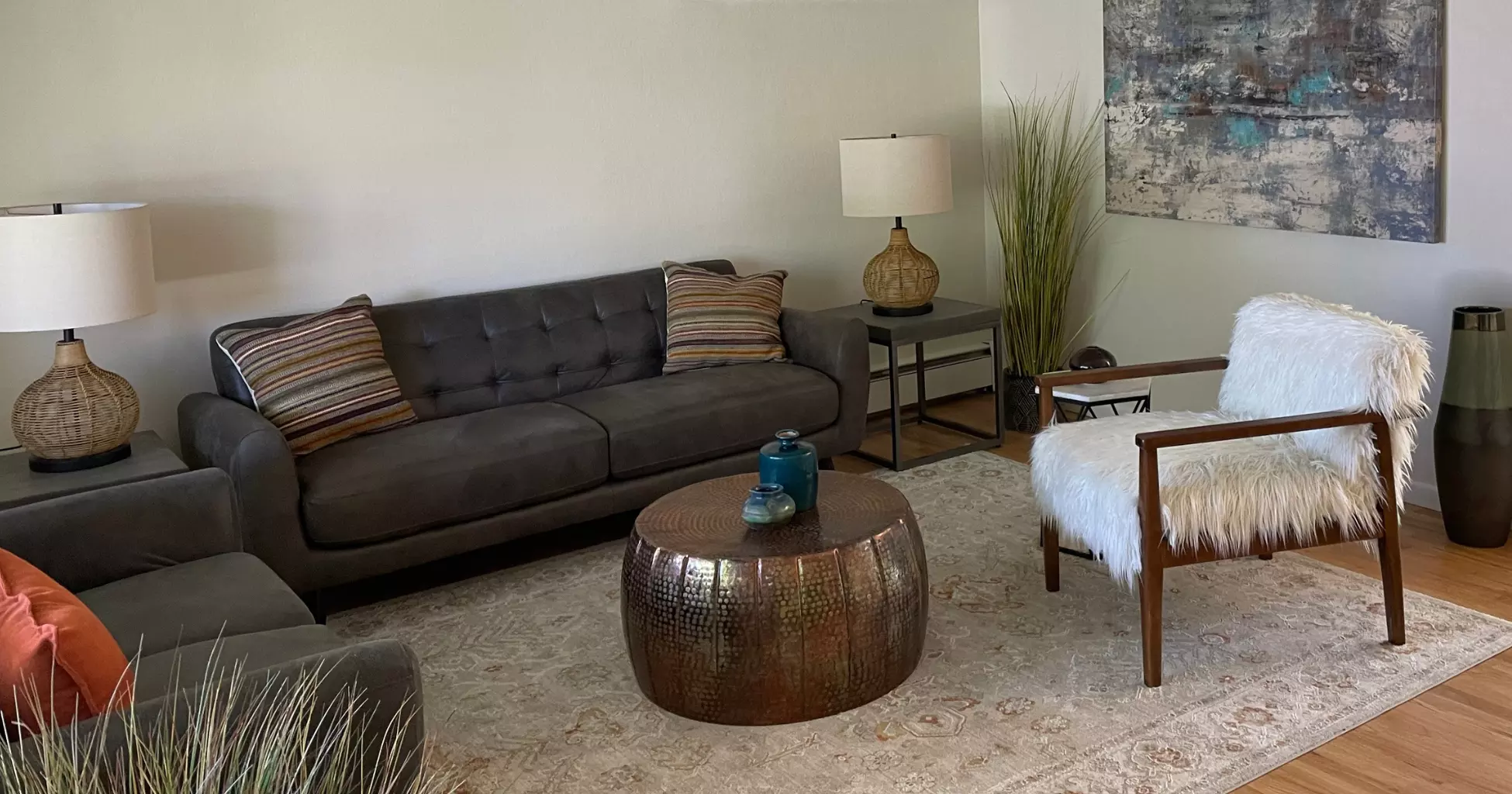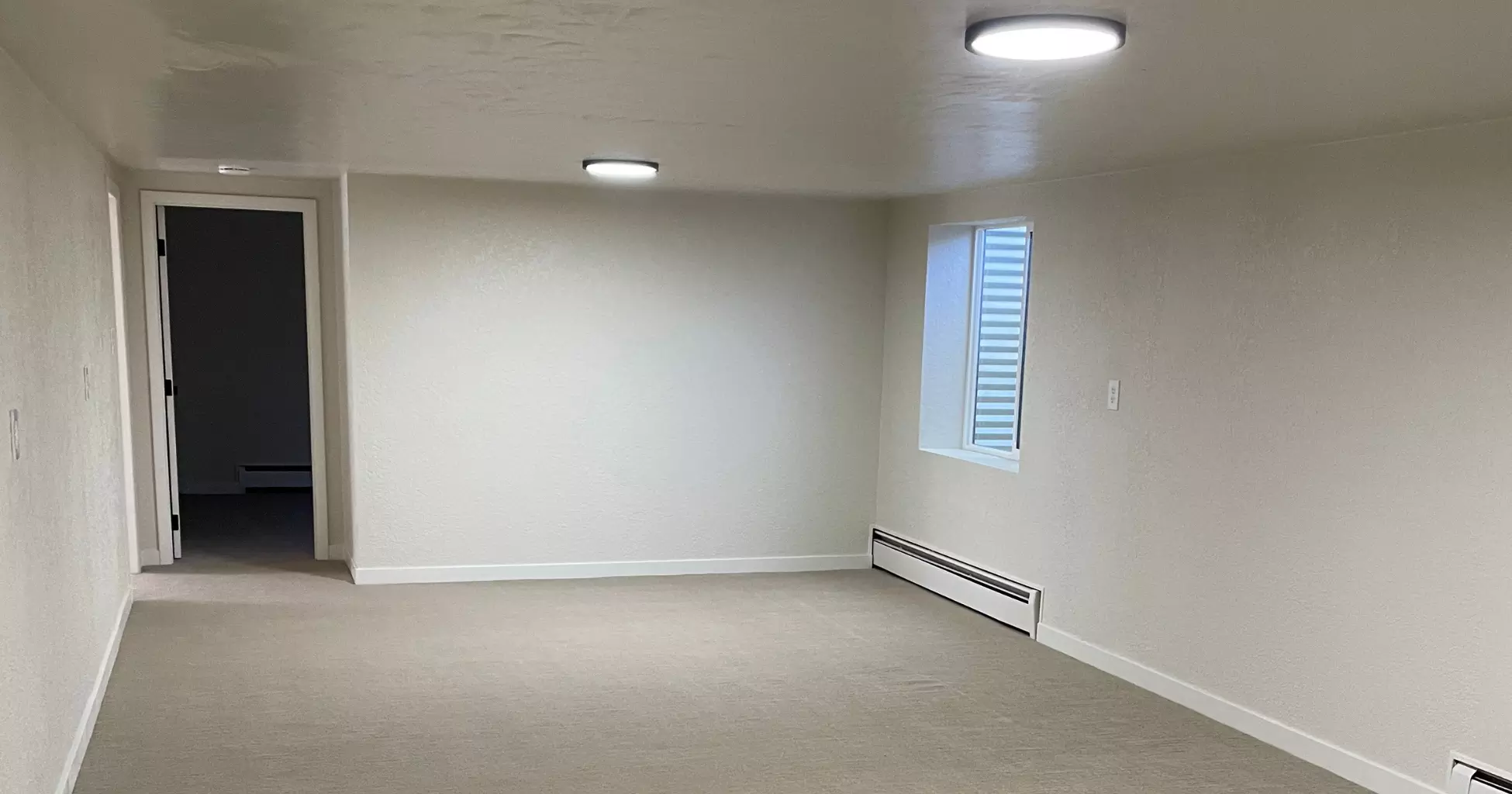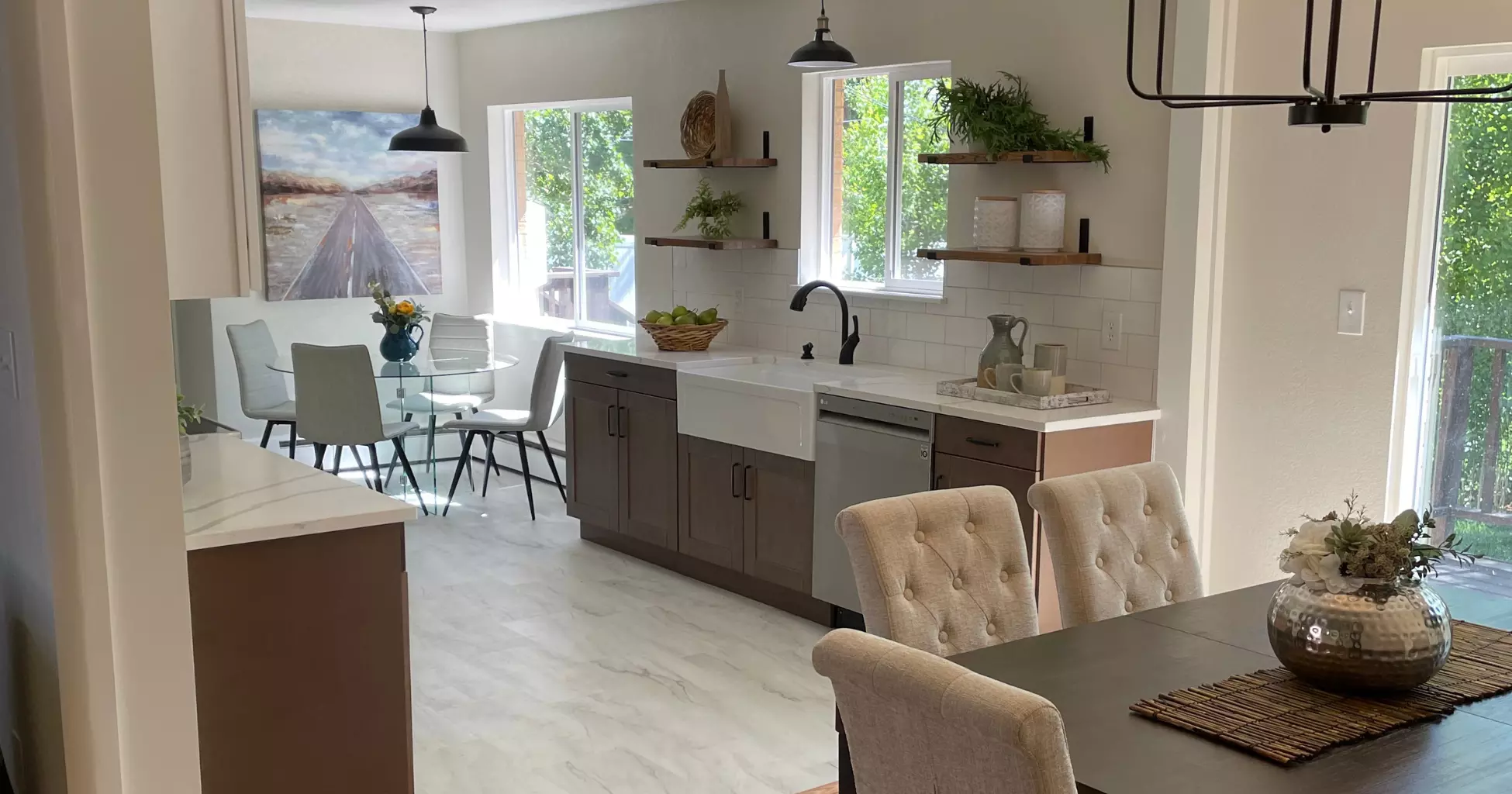Home remodeling is an opportunity to transform your house into your dream home. However, starting on a remodeling journey can feel overwhelming. You will face countless decisions to make and details to consider. Every step plays a crucial role in the success of your project.
But don’t worry! In this article, we will walk you through the essential aspects of remodeling your home. We will also offer tips and expert advice to successfully navigate this unfamiliar road.
Ready to turn your remodeling dreams into reality? Dive in and discover how to create a space that truly reflects your personality and lifestyle.
What is Home Remodeling?

Home remodeling refers to the process of making improvements to an existing residence. Its purpose is to enhance the house’s aesthetic appeal and functionality. This can involve a wide range of home improvement projects. For example, minor cosmetic updates like painting and installing new fixtures. It can also be major structural changes in your house such as adding rooms, knocking down walls, or completely redesigning the layout of the home.
Remodeling aims to modernize outdated spaces and address the home’s underlying issues. Sometimes, it is to better accommodate the evolving needs of the occupants. It often involves various trades including carpentry, plumbing, electrical work, and interior design. The ultimate goal of a home remodeling project is to create a living space that is more comfortable and visually pleasing suited to the homeowner’s lifestyle and preferences.
Remodeling vs Renovation vs Repair: What’s The Difference?
Remodeling, renovation, and repair are often used interchangeably. However, each has a distinct meaning and purpose. Understanding the differences between these is crucial when planning remodel projects.
Remodeling refers to changing the structure or form of a space. This process often involves major construction work such as altering floor plans and expanding square footage. Adding new features like a kitchen island or premium bathroom upgrades are also part of remodeling. Remodeling contractors specialize in transforming a home to better suit the owner’s needs.
Renovation, on the other hand, focuses on restoring a space to a good state of repair without altering its fundamental structure. This might involve updating kitchen cabinets, refinishing a classic wood deck, or installing new entry doors. It aims to modernize and refresh the look of a space. This process often includes upgrading fixtures, bathroom tile, or wooden decks. Renovating a home typically has lower upfront costs compared to remodeling. You can fund your renovation project through renovation loans or a personal loan.
Repair is the act of fixing specific issues to keep a home in good working condition. This includes minor tasks like bathtub repair, garage door replacements, or fixing a leaky faucet. Repairs are essential for maintaining the habitable space of a home. It ensures that everything functions properly. While repairs might not provide high returns on investment, they are necessary for overall property maintenance.
What are The Common Types of Home Remodeling Projects?
Home remodeling projects can range from small updates to major renovations. Here are some of the common home remodeling projects that homeowners commonly undertake:
Kitchen Remodel
The kitchen is often considered the heart of the home. That’s why kitchen remodeling is one of the most popular home remodeling projects. A kitchen remodel can involve updating appliances, cabinets, countertops, and flooring to create a more modern and functional space for cooking and entertaining.
Bathroom Remodel
Another common home remodeling project is updating the bathroom. This can include installing a new shower or bathtub, replacing old fixtures, and updating the flooring and walls to create a more luxurious and spa-like atmosphere.

Basement Remodel
Many homeowners choose to renovate their basement to create additional living space or a recreational area. This can involve finishing the basement, adding insulation, and updating lighting and flooring to create a cozy and inviting space.
Home Addition
For homeowners looking to increase their living space, a home addition is a popular remodeling project. This can involve adding an extra bedroom, expanding the kitchen, or creating a new living area to accommodate growing families or changing needs.
Why Should You Remodel Your Home?
Remodeling your home is a significant decision that can bring numerous benefits. A well-planned remodel can make your home more enjoyable and suitable for your needs. Let’s explore the key reasons why home remodeling is a worthwhile investment.
Home Remodeling Increases Home Value
One of the primary reasons to remodel your home is to increase its value. Projects like kitchen remodels, bathroom renovations, and adding a finished basement are known to offer a high return on investment. For example, updating kitchen cabinets or installing a new kitchen island can significantly boost your home’s appeal to potential buyers. To maximize value, focus on premium products and high-quality finishes that stand the test of time.
Home Remodeling Enhances Comfort and Functionality
A remodel can transform your home into a more comfortable and functional space. For instance, updating bathroom floors and bathroom cabinets can create a more pleasant and efficient bathroom experience. Kitchen renovations can improve workflow and usability. Your meal preparation becomes more enjoyable. Including modern features like an electric heat pump can also enhance comfort.
Home Remodeling Modernizes and Updates Your Home
Modernizing your home through remodeling can make it look and feel more current and stylish. Replacing old exterior doors with new, energy-efficient ones can give your home a fresh, updated appearance. Upgrading to a hardwood floor or adding a classic wood deck can also add a touch of modern elegance. However, when planning for your whole home remodel, focus on creating a cohesive design plan that reflects contemporary trends while maintaining your personal style.
Home Remodeling Addresses Safety Issues
Addressing safety concerns is another critical reason to remodel your home. Over time, wear and tear can lead to potential hazards. These can be outdated electrical systems or unstable structures. Remodeling can prevent accidents and improve safety. When creating a plan, always prioritize safety upgrades to ensure all modifications meet current building codes and standards.
Home Remodeling Personalizes Your Living Space
Finally, remodeling allows you to personalize your home to better reflect your tastes and lifestyle. Whether you want to create a bathroom nook arrangement for relaxation or expand your closet space for better organization, remodeling offers endless possibilities. Including custom cabinet designs or opting for budget kitchen remodel options can make your home uniquely yours. Look for remodeling companies that offer design guidance to help bring your vision to life.
How to Plan Your Home Remodeling Project?

Planning a home remodeling project can be both exciting and overwhelming. It involves a series of important steps to ensure the final result meets your expectations and adds value to your property. Whether you’re considering a bathroom remodel or a complete basement refinishing, careful planning is crucial. Here are our expert tips to help you navigate the remodeling process effectively and achieve the best possible outcome.
Define Your Goals and Priorities
Setting clear goals and priorities is the first step in planning your home remodeling project. Identify which areas of your home need improvement and why. Are you looking for an all-out bathroom makeover to increase your return on investment? Are you adding a kitchen island to enhance functionality? Having a clear vision helps guide the project. It also ensures you focus on what matters most. List your goals and prioritize them to manage your time and budget efficiently.
Set a Realistic Budget
A realistic budget is key to avoiding unexpected additional costs and Keeping your project on track. Start by researching the average costs for the type of remodel you’re planning. For instance, bathroom remodel costs can vary significantly based on the extent of the work and the materials chosen. Typically, homeowners should expect to spend around $10,000 to $25,000 for a mid-range bathroom remodel. Consider equity loans or a personal loan to finance the project if needed. Always include a contingency of about 10-15% to cover unforeseen expenses.
Create a Detailed Plan
Creating a detailed plan is essential for a successful remodeling project. Outline each phase of the project including design, demolition, construction, and finishing touches. If you having your bathroom remodeled, look for some bathroom remodel photos for inspiration. Get design guidance from professionals to visualize your ideas. Make sure to specify all materials and finishes beforehand to avoid delays. A detailed plan helps keep the project organized.
Hire The Right Professionals
Hiring the right professionals can make or break your remodeling project. Look for a remodeling contractor with a reputation for quality and 5-star reviews. Don’t hesitate to ask for references to products they have previously worked on to gauge their expertise. Hiring professionals with a solid track record ensures high-quality work and satisfied customers. Avoid contractors with a bad reputation as they can cause delays and increase costs.
Obtain Necessary Permits
Obtaining the necessary permits is crucial to ensure your project complies with local building codes. In Colorado, homeowners typically need permits for structural changes, electrical work, plumbing, and exterior modifications. Check with your local building department for specific requirements. Failure to obtain the proper permits can lead to fines and delays. It’s best to have your remodeling contractor handle the permit process to ensure everything is in order.
Select Materials and Finishes
Selecting the right materials and finishes is vital to achieving the desired look and durability. Consider premium bathroom upgrades when remodeling your bathroom. For kitchens, opt for granite and ceramic countertops. High-quality materials can enhance the overall aesthetics and longevity of your remodel. However, always check your budget. It is always best to make decisions based on your budget. Consider as well the style you envision so each choice adds value to your home.
How to Choose The Right Materials for Your Home Remodeling Project?
Choosing the right materials for your home remodeling project is crucial to achieving your desired outcome. The materials you select will impact not only the aesthetic appeal of your home. They will also affect the functionality and longevity. Here’s a guide to help you choose the best materials for your remodeling project.
Assess Your Needs and Preferences
Start by identifying what you want to achieve with your remodeling project. Consider your lifestyle, the functionality of the space, and your aesthetic preferences. If you have children or pets, you might prioritize durable and easy-to-clean materials. Create a list of must-haves and nice-to-haves to guide your material selection.
Research Material Options
Researching material options is essential to understanding the pros and cons of each choice. Look into different types of flooring, countertops, cabinetry, and other materials that suit your project. Use online resources, visit showrooms, and read reviews to gather comprehensive information. This helps you compare prices, quality, and the sustainability of the materials.
Consider Durability and Maintenance
Durability and maintenance are key factors in material selection. Choose materials that can withstand daily wear and tear and require minimal upkeep. For instance, hardwood floors are durable but need regular maintenance. Meanwhile, tile flooring is both durable and low-maintenance. Evaluate how much time and effort you’re willing to invest in maintaining these materials over time.
Evaluate Aesthetic Appeal
The aesthetic appeal of materials should align with your overall design vision. Consider colors, textures, and patterns that complement your home’s style. For example, sleek and modern materials work well in contemporary homes. Natural and rustic materials suit traditional or farmhouse styles.
Also, think about the mood you want to create in each room. Warm tones can make a space feel cozy and inviting. Cooler tones can create a calm and serene atmosphere. Use this to guide your color and material choices. Combining different textures adds depth and interest to a space. For example, pairing smooth countertops with a textured backsplash can create a balanced and appealing look. Remember that a harmonious design enhances the overall ambiance and can increase your home’s value.
Invest in High-Quality Materials
Investing in high-quality materials pays off in the long run. While they might cost more upfront, they often last longer and perform better than cheaper alternatives. High-quality materials can enhance the look of your home. They also reduce the need for frequent replacements or repairs. Consider this as a smart investment in your home’s future.
Seek Professional Advice
Consulting with professionals can provide valuable insights into material selection. Interior designers, architects, and contractors have years of experience. They can recommend the best materials for your needs and budget. They can also foresee potential issues and suggest alternatives that you might not have considered.
Check for Warranties
Always check for warranties when selecting materials. Warranties can provide peace of mind and protect your investment. They often cover defects and performance issues for a specific period. Make sure to understand the terms and conditions of the warranty to know what is covered and for how long.
What Home Remodeling Projects Need Permit?
When planning a home remodeling project, it’s essential to understand which tasks require a permit. This will help you avoid legal issues and ensure safety standards. Permits are necessary for various types of work. Below are the key projects that typically require permits:
- Structural Changes
- Electrical Work
- Plumbing Work
- HVAC System Changes
- Roofing
- Window and Door Replacement
- Demolition
- Decks and Porches
- Fencing
- Additions and Major Renovations
What are The Common Challenges in Home Remodeling?

There are common pitfalls that homeowners should be aware of to ensure a smooth home remodeling project. Understanding and preparing for common challenges can help you navigate the process more effectively. It will also help you achieve the desired results without unnecessary stress.
Budget Overruns
One of the most common challenges in home remodeling is budget overruns. Costs can quickly escalate due to unexpected expenses or changes in the scope of work. To avoid this, establish a detailed budget and include a contingency fund for unforeseen costs. As mentioned above, we recommend adding 10-15% to your total budget for unforeseen expenses. Spend time to regularly track expenses and communicate with your contractor to stay on top of your finances.
Delays in Project Timeline
Delays in the project timeline are another frequent issue. It is often caused by unforeseen complications or supply chain disruptions. To minimize delays, create a realistic timeline with your contractor. Ensure all necessary materials are ordered well in advance. Regular updates and proactive planning can help keep the project on track.
Finding the Right Contractor
Finding the right contractor is crucial but can be challenging. A good contractor can make or break your remodeling experience. To find a reliable contractor, seek recommendations, check references, and review portfolios. Always opt for a contractor that is licensed and insured. Take the time to conduct thorough interviews to assess their communication and project management skills.
Obtaining Permits and Approvals
Securing the necessary permits and approvals can be a complex and time-consuming process. This step is essential so your remodel complies with local building codes and regulations. To streamline this process, research the specific permits required for your project. Work closely with your contractor or a permit expediter to handle the paperwork and inspections efficiently.
Unforeseen Structural Issues
Unforeseen structural issues can arise once demolition begins. Most of the time, it reveals problems like rot, mold, or outdated wiring. These issues can disrupt your plans and add to the budget. To mitigate this risk, have a thorough inspection before starting the project. It is best to set aside a contingency fund to address any surprises that may emerge.
Material Availability and Selection
Choosing and securing the right materials can be a challenge. Supply chain issues can cause delays and shortages. Plan your material selection early and have backup options in mind. Work with your contractor to ensure timely orders and delivery schedules. Doing so avoids halting the project.
Communication Gaps
Clear and consistent communication between you and your contractor is vital. Misunderstandings can lead to mistakes and delays. Establish regular check-ins and use communication tools like project management apps to keep everyone on the same page. Clear documentation of all decisions and changes can prevent costly errors.
Design and Decision Fatigue
The multitude of decisions in a remodeling project can lead to design and decision fatigue. Making numerous choices can be overwhelming. To combat this, create a clear vision and plan for your project from the start. Break down decisions into manageable steps. Seek the help of a designer if needed to streamline the process.
Quality Control and Workmanship
Ensuring high-quality workmanship is essential for a successful remodel. Poor quality can lead to issues and additional costs down the line. To maintain quality control, select a reputable contractor with a proven track record. Schedule regular site visits to monitor progress. Your home remodeler should address any concerns immediately to ensure the work meets your standards.
What to Consider When Choosing Your Home Remodeling Contractor?
Choosing the right home remodeling contractor is crucial for ensuring your project is completed successfully and to your satisfaction. It’s important to evaluate various factors to make an informed decision. Here are some key considerations to keep in mind when selecting your contractor.
Experience and Expertise
Experience and expertise are vital when selecting a home remodeling contractor. A contractor with years of experience is likely to have encountered and solved a variety of remodeling challenges. Look for contractors who specialize in the type of project you’re planning. Ask to see examples of their previous work. Inquire about their experience with similar projects to gauge their ability to deliver quality results.
Licensing and Insurance
Licensing and insurance are non-negotiable when choosing a contractor. Proper licensing means the contractor meets the regulatory standards for their trade. Insurance, on the other hand, protects you from liability in case of accidents or damage during the project. Always verify that your contractor holds the necessary licenses and insurance policies. You may also request copies of these documents for your records.
Reputation and References
A contractor’s reputation and references provide insight into their reliability and quality of work. Ask for a list of references and take the time to contact previous clients. Read online reviews and ratings to get a broader sense of the contractor’s reputation. A reputable contractor will have positive feedback. They will also be transparent about their work history.
Work Ethics and Professionalism
Work ethics and professionalism are critical for a smooth remodeling process. A contractor should demonstrate punctuality, respect for your property, and clear communication. Observe their interactions with you during the initial consultation. It is also best to ask about their work processes. A professional contractor will provide a detailed contract and timeline. Having a detailed contract means they clearly understand all aspects of the project.
Warranties and Guarantees
Warranties and guarantees offer peace of mind and protection for your investment. A contractor who stands behind their work will offer warranties on their services and guarantees on the materials used. Clarify the terms and duration of these warranties and ensure they are included in the contract. This commitment to quality and customer satisfaction is a sign of a reliable contractor.
How to Maintain Your Newly Remodeled Home?

Maintaining your newly remodeled home is essential to preserving its beauty, functionality, and value. Proper upkeep not only extends the life of the improvements. It also ensures a comfortable and safe living environment. Here are practical tips to help you keep your remodeled space in top condition.
Do Regular Cleaning
Regular cleaning is crucial for maintaining your newly remodeled home. Dust and dirt can damage surfaces and diminish the look of your renovations. Establish a consistent cleaning schedule to keep every area sparkling. Use appropriate cleaning products for different materials to avoid damage and prolong their lifespan.
Conduct Routine Inspections
Routine inspections help identify potential issues before they become major problems. Regularly check for leaks, cracks, or any signs of wear and tear. Addressing small issues promptly can prevent costly repairs. Plus, these can keep your home in pristine condition. Create a checklist of areas to inspect periodically, so nothing is overlooked.
Be Aware of The Proper Maintenance of Materials
Different materials require different maintenance practices to stay in good condition. For instance, granite countertops need to be sealed annually to prevent stains. Hardwood floors benefit from regular sweeping and occasional polishing to maintain their shine. For stainless steel appliances, use a non-abrasive cleaner to avoid scratches and maintain their sleek appearance. Educating yourself on the care instructions for each new material ensures their longevity and keeps your home looking pristine.
Address Wear and Tear
Addressing wear and tear as it occurs is essential for maintaining your home’s appearance and functionality. Keep an eye out for signs of damage like chipped paint, loose tiles, or worn flooring. Repairing these issues early prevents them from worsening and preserves the quality of your remodel.
Schedule Seasonal Maintenance
Seasonal maintenance is key to addressing issues related to weather changes. In the spring, clean out the gutters. Make sure to inspect the roof for any damage caused by winter weather. During the summer, check your air conditioning system so it’s functioning efficiently. In the fall, have your heating system serviced. Inspect windows and doors for drafts to prepare for colder months. Winter is a good time to examine your home’s insulation and weatherproofing. This proactive approach helps keep your home safe and comfortable throughout the year.
Regularly Monitor and Maintain Energy-Efficient Upgrades
Energy-efficient upgrades require regular monitoring to ensure optimal performance. Check solar panels for dirt or debris and clean them to maintain efficiency. Smart thermostats should be updated with the latest firmware and checked for connectivity issues. Additionally, inspect insulation and weatherstripping around doors and windows to prevent energy loss. Regular maintenance prolongs the lifespan of these upgrades and maximizes their cost-saving benefits.
Don’t Neglect The Exterior of Your Home
The exterior of your home plays a crucial role in its overall appearance and structural integrity. Regularly inspect and clean siding, windows, and gutters to prevent buildup of dirt and mildew. Power wash driveways and walkways to keep them looking fresh. Repaint or reseal exterior surfaces as needed to protect against weather damage.
Landscaping also needs attention. Trim trees and shrubs. Ensure proper drainage to avoid water damage. Taking care of the exterior enhances curb appeal. It also protects your home from environmental wear and tear.
Frequently Asked Questions About Home Remodeling
Home remodeling projects often come with many questions from homeowners. Understanding the various aspects of remodeling can help you plan more effectively and avoid potential pitfalls. Here are some frequently asked questions about home remodeling, along with concise answers to guide you through the process.
How can I finance my home remodeling project?
There are several options to finance your home remodeling project. You may apply for home equity loans, personal loans, and refinancing. Each option has its own benefits and considerations. Research and choose the one that best fits your financial situation.
How long does a typical remodeling project take?
The duration of a remodeling project varies depending on the scope and complexity. Smaller projects can take a few weeks. Larger renovations might span several months. Discuss timelines with your contractor to set realistic expectations.
Can I stay in my home during the remodeling process?
Staying in your home during remodeling depends on the extent of the work and your comfort level with the disruption. For major renovations, it might be more practical to stay elsewhere temporarily. For smaller projects, you can usually remain at home with some adjustments.
How do I handle changes or issues that arise during the remodeling process?
Effective communication with your contractor is key to handling changes or issues. Address any concerns immediately and be open to adjustments in the plan. Having a contingency budget can also help manage unexpected expenses.
What are the most popular remodeling trends?
Popular remodeling trends include open floor plans, energy-efficient upgrades, and modern kitchens and bathrooms. Smart home technology and sustainable materials are also in high demand. Stay updated with current trends to ensure your renovation adds value to your home.
How do I prepare my home for a remodeling project?
Prepare your home by clearing the work area and protecting valuables. You may also set up a temporary living space if needed. Communicate with your contractor about what needs to be moved or covered to prevent damage.
What should be included in a remodeling contract?
A remodeling contract has project details, timelines, and payment schedules. It must have a clear description of the work to be done. It should also cover warranties, insurance, and procedures for changes or disputes. Reviewing the contract thoroughly ensures mutual understanding and protection.
What is the best time of year to start a remodeling project?
The best time for remodeling depends on the type of project and your local climate. Spring and summer are popular due to favorable weather conditions. But indoor projects can be done year-round. Planning ahead can help avoid seasonal delays.
How can I increase storage space in my remodeled home?
Opt for built-in cabinets and multifunctional furniture to increase storage space. You may also optimize closet systems. Utilizing vertical space and underused areas like staircases or alcoves can also add storage without sacrificing style. Discuss storage solutions with your designer to maximize efficiency.
Wrapping Up
Home remodeling can breathe new life into old spaces. It enhances the value of your home, improves its efficiency, and addresses your evolving needs. It provides solutions that make everyday living more enjoyable. With the right approach, home remodeling can solve various issues like outdated designs and insufficient storage.
If you are ready to start your home remodeling project, NOCO Repair’s expert home remodeling services are here to help. Our experienced team delivers a seamless remodeling process and high-quality results that expectations. We pride ourselves on personalized service, innovative solutions, and meticulous attention to detail. Choose NOCO Repair for a remodeling experience that is not only stress-free but also exciting and rewarding. Contact us now at 970-397-2741 to get started.

